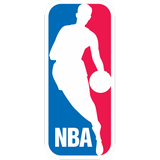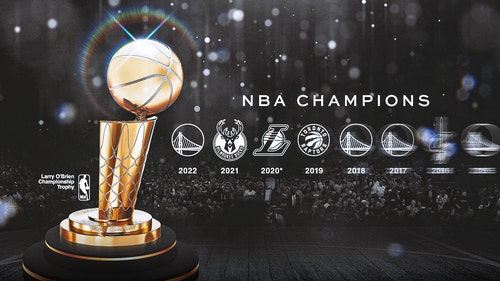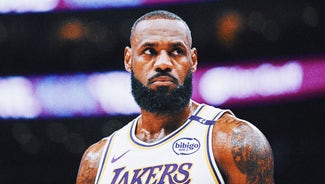
Anderson Varejao making NBA history by having played with both Cavs, Warriors this season

Golden State Warriors big man Anderson Varejao will make history during The NBA Finals as the first player to play for both the Eastern and Western Conference champions during the same season.
Varejao appeared in 31 games for the Cleveland Cavaliers before a trade deadline deal sent him to Portland in February. The Trail Blazers then waived the 12-year vet, and four days later he signed with Golden State, where he has played since.
Considering that his old team ended up facing his new one for the championship, the deal turned out to be quite the coup for Varejao, who could get his first ring regardless of which team takes the series. Dan Gilbert, the Cavs' owner, will have a say in whether Cleveland gives the 6-foot-10 Varejao jewelery in the event of a Golden State loss. But while Varejao, who has played sparingly this postseason, is the first in NBA history to find himself in this particular win-win situation, he's not the first across all of pro sports.
In fact, there have been eight MLB players, five NFL players and 13 NHL players to play for both participants in a championship game or series during that year's regular season. (Hat tip to Dustyn Waite of FS1 research for the assist.)
In baseball, the most recent instance came in 2011, when when the Texas Rangers released 41-year-old reliever Arthur Rhodes in August, only to have him sign with the St. Louis Cardinals days later.
The teams later met in the World Series, where St. Louis beat Texas in seven games. Rhodes appeared in three World Series games against his former team and did not allow a hit or a run in one inning of work, though he did allow a game-tying sacrifice fly to Josh Hamilton in the ninth inning of Game 2.
One year earlier, in 2010, the Rangers traded right-handed reliever Chris Ray to the San Francisco Giants for catcher Bengie Molina, only to have the teams meet in the Fall Classic (which the Giants won in five games).
The rest of the baseball cases are as follows:
• In 1998, the Yankees acquired reliever Jim Bruske from the Padres in August, then beat San Diego in the World Series that October. Bruske appeared in three regular-season games for New York but did not pitch in the postseason.
• In 1985, the Cardinals traded outfielder Lonnie Smith across the state to Kansas City, then lost to the Royals in the World Series. Smith, who had previously won titles with St. Louis (1982) and the Philadelphia Phillies (1980), hit .333 in 27 World Series at-bats.
• In 1984, the Tigers purchased Sid Monge's contract from the Padres. Monge did not pitch in the postseason but threw 36 regular-season innings for Detroit, which beat San Diego in five games to win the franchise's fourth (and most recent) championship.
• In 1952, the Brooklyn Dodgers traded lefty Johnny Schmitz across town to the Yankees. The Dodgers and Yankees later met in the World Series, but Schmitz wasn't a part of it -- he was dealt to the Cincinnati Reds less than a month after arriving in the Bronx.
• In 1951, Jack Kramer began his last big league season with the New York Giants but was released after posting a 15.43 ERA in his first four appearances. Kramer then signed with the Yankees, who released him in August before beating the Giants for the title.
In football, there are two cases of a player lining up for both the league champ and runner-up prior to the advent of the Super Bowl. The first, Buster Mitchell, played for both the Detroit Lions and New York Giants in 1935. Detroit later beat New York in the '35 NFL championship game.
The other, former USC center George Belotti, played for both the Houston Oilers and San Diego Chargers in 1961. In 1960, Belotti had been part of the Oilers team that beat the Chargers (who were based in Los Angeles at the time) for the AFL title. The second time around, Belotti was on the losing end, as Houston repeated as champs with a 10-3 win over San Diego.
After Belotti, more than a quarter century passed before another player got the Varejao treatment in pro football:
• In 1987, backup center David Jones began the year with the Denver Broncos but was later released, freeing him up to sign with the Washington Redskins. Jones appeared in Washington's divisional and NFC championship game wins, but was placed on injured reserve prior to the team's 42-10 victory over Denver in Super Bowl XXII.
• In 1996, longtime Miami Dolphins offensive lineman Jeff Dellenbach began the year with the Patriots but was cut by the team midway through the season. A Packers fan since childhood, the former Wisconsin Badgers star then latched on with Green Bay and went on to win Super Bowl XXXI over New England.
• In 2001, the St. Louis Rams demoted special teamer Kole Ayi to the practice squad after six games. Ayi was then picked up by the Giants and waived after three weeks, at which point the Patriots claimed the UMass standout off waivers. Ayi appeared in one game in New England before landing on IR with a leg injury, but he still got a ring for the team's Super Bowl XXXVI win over the Rams.
Perhaps surprisingly, there have been more cases of players pulling double-duty for both league champions in the NHL than in any other sport, however there has only been one such case in the last 17 seasons.
That distinction belongs to left winger Danny Carcillo, who began the 2013 season with the Los Angeles Kings but was traded to the New York Rangers for a draft pick after skating in 26 games with LA. A Stanley Cup winner with the Chicago Blackhawks during the 2012-13 season, Carcillo appeared in 31 games for the Rangers, then scored two goals for the team during the 2014 playoffs.
However, Carcillo was suspended 10 games by the league after he roughed up linesman Scott Driscoll during Game 3 of the Eastern Conference finals. The ban was later reduced to six games, making Carcillo eligible to return for Game 4 of the Cup final against the Kings, but Carcillo ultimately did not skate against his former team in LA's 4-1 series win.
As for the others:
• In 1999, the Buffalo Sabres traded veteran center Derek Plante to the Dallas Stars. Later that season, the Stars and Sabres met for the Cup. Plante, who appeared in six earlier playoff games, was a healthy scratch for the entirety of the six-game duel, but still had his name engraved on the Cup following Dallas' 4-2 series win.
• In 1995, the New Jersey Devils traded defenseman Slava Fetisov to the Detroit Red Wings. Known best for his role in paving the way for Soviet players to join the NHL, Fetisov eventually wound up playing the Devils for the Stanley Cup that spring. He was swept by his former team in '95 but later lifted the Cup with the Wings in '97 and '98.

• In 1990, the Penguins and North Stars executed a December trade that sent Minnesota defensemen Peter Taglianetti and Larry Murphy to Pittsburgh for Pens defensemen Chris Dahlquist and Jim Johnson. Five months later the teams met for the league championship, with Pittsburgh taking the series 4-2, as Murphy and Taglianetti each registered two points in the Game 6 win.
• In 1988, Moe Lemay was traded from Edmonton to Boston for Alan May, who spent the remainder of the season with Nova Scotia of the AHL. The left winger Lemay, meanwhile, played sparingly for the Bruins in the regular season, but did play in each game of the Cup final against his old team, the Oilers -- including a strange Game 4 that was abandoned with the score tied 3-3 during the second period due to a power failure at Boston Garden. The Oilers went on to win 4-0 in five games.
• In a separate 1988 trade, the Oilers acquired Geoff Courtnall from the Bruins. However, the return player in the deal, goalie Andy Moog, had yet to appear in a game for Edmonton that year as the free agent held out for a new contract. (The NHL did not have true free agency until 2005, and Moog's rights still belonged to the Oilers.) Bill Ranford, a Bruins goalie also involved in the trade, had been playing with the AHL's Maine Mariners.
• In December 1963, the Toronto Maple Leafs waived right winger John MacMillan. MacMillan was then claimed by the Red Wings, who lost to the Leafs in seven games in the Stanley Cup final, Toronto's third straight championship at the time.
• In January 1946, the Montreal Canadiens recalled goaltender Paul Bibeault from Boston after Bibeault spent parts of two seasons with the Bruins as a wartime replacement for Frank Brimsek, who left the NHL to serve in the Coast Guard during World War II. As compensation, the Habs loaned defenseman Mike McMahon to Boston. Montreal later defeated Boston 4-1 in the Stanley Cup final.
• In 1928, rookie defenseman Myles Lane -- the first American-born college player to play in the NHL -- played 24 games with the Rangers before his rights were sold to Boston for $7,500 in January 1929. Two months later, the Bruins beat the Rangers 2-0 in a best-of-three series to win the Stanley Cup.
You can follow Sam Gardner on Twitter or email him at samgardnerfox@gmail.com.








